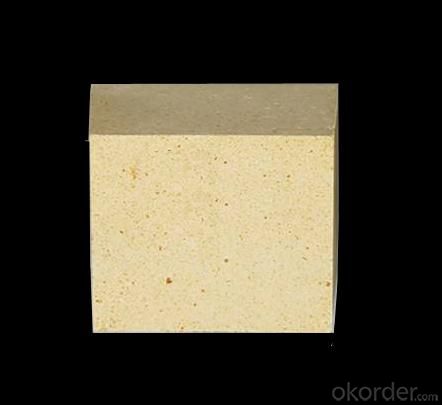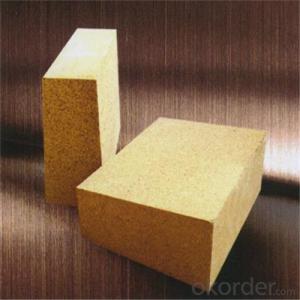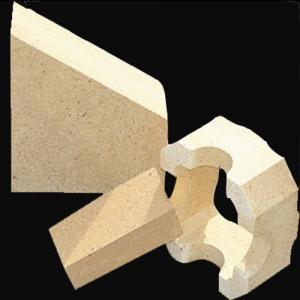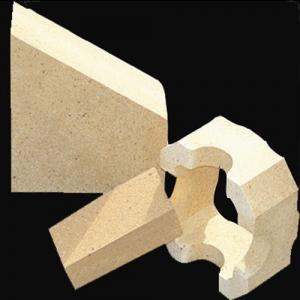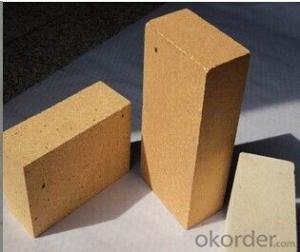Fireclay Brick - Low Porosity SG12
- Loading Port:
- China Main Port
- Payment Terms:
- TT or L/C
- Min Order Qty:
- 5 ton m.t
- Supply Capability:
- 1000 Tons Per Month m.t/month
OKorder Service Pledge
OKorder Financial Service
You Might Also Like
General Information of Low Porosity Fireclay Brick SG12
Our corporation produces a comprehensive range of Low Porosity Fireclay bricks, with 30% to 55% alumina content, all of these bricks exhibit excellent performance.
Our Low Porosity Fireclay bricks are the final result of blending excellent calcined flint clay and calcined bauxite, with cutting-edge technology, adding superfine powder, after mixing, drying, forming, in the high temperature shuttle kiln. We ensure you that the Fireclay Bricks made by us possess high quality standard and have gone through all the complicated quality control parameters. Their durability and strength adds life to the structure and they have the capacity of bearing high temperature.
Technical Data of Low Porosity Fireclay Brick SG12 | ||
Physical Properties: | ||
Refractoriness | ℃ | 1750 |
Permanent Linear Change(1400℃×2h)% | % | -0.1~0.05 |
Apparent Porosity, % | % | ≤12 |
Cold Crushing Strength | Mpa | ≥65 |
Refractoriness Under Load (T0.6) | ℃ | - |
Thermal Expansion at 1000℃, | % | - |
Density | g/cm3 | ≥2.35 |
Chemical Analysis: |
|
|
Al2O3 | % | ≥45 |
Fe2O3 | % | ≤1.2 |
Note: | ||




Feature of Low Porosity Fireclay Brick SG12
Resistant to thermal shock, abrasion, chemical attack
High ability for anti-abrasion during work
Low shrinkage degree under high temperature so as to maintaining integrity of the furnace lining
Low apparent porosity, and low Fe2O3 content to reduce the carbon deposit in the blowhole and avoid the bricks broken in case of expansion
Applications of Low Porosity Fireclay Brick SG12
Low Porosity Fireclay Brick SG12 is mainly used in glass furnace.
- Q: How to built refractory bricks as fitting between square and circle ducts
- Build a big mushroom, and build the legs as square
- Q: What are the materials for building blocks and what are the specifications?
- According to the production process, it is divided into sintered brick (fired brick), autoclaved brick and steam curing brick.
- Q: does the furnace wall use refractory bricks to keep the heat? Or use the insulation material to keep heat ?
- generally is refractory insulation materials, casting materials.
- Q: The state's policy on clay bricks
- Also known as clay brick brick, is a man-made small bulk building, clay brick clay (including shale, coal gangue powder) as the main raw material, through mud processing, molding, drying and roasting, solid and hollow.
- Q: How good is the hardness of corundum refractory brick?
- The basic materials of corundum refractories are fused corundum or sintered corundum. the refractory brick containing more than 90% of Al2O3 is called corundum refractory brick. so, corundum refractory brick. Corundum has a high hardness (9 level of Mohs hardness) such as zirconium corundum refractory brick. Corundum refractory brick is resistant to acid well and melting point is also high, also known as pure alumina refractory brick products, , it has a good effect. These are closely related with the structure of the Al - 0 key, titanium corundum refractory brick, and other basic slag. It is used in high temperature oxidizing atmosphere or in reducing atmosphere. the metal and glass solution have good stability. a-Al2O3 is the main material of high temperature refractory brick and high temperature electrical insulating material .
- Q: What is sintered non clay brick?
- According to the production process can be divided into sintered brick and non sintered brick, in which non fired brick can be divided into compressed brick, steam brick and autoclaved brick, etc., according to whether or not the hole can be divided into ordinary brick, porous brick, hollow brick.
- Q: Are clay bricks radioactive?
- Radiation is almost invisible, radiation is almost everywhere.
- Q: Can refractory bricks be used to build a house?
- Refractory brick can be used to build houses, but you can not use ordinary cement to build, the cost is 3 times than that of ordinary brick.
Send your message to us
Fireclay Brick - Low Porosity SG12
- Loading Port:
- China Main Port
- Payment Terms:
- TT or L/C
- Min Order Qty:
- 5 ton m.t
- Supply Capability:
- 1000 Tons Per Month m.t/month
OKorder Service Pledge
OKorder Financial Service
Similar products
Hot products
Hot Searches
Related keywords




